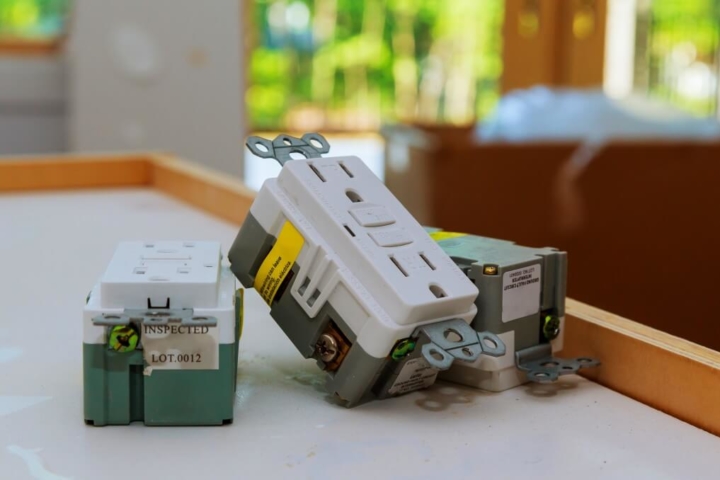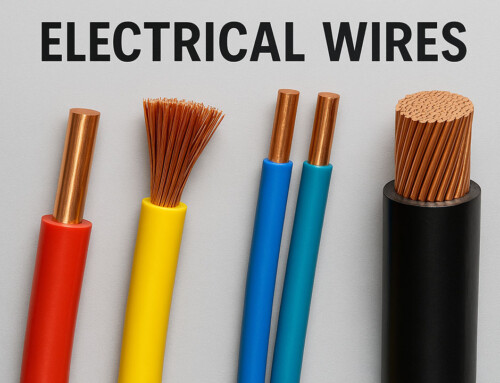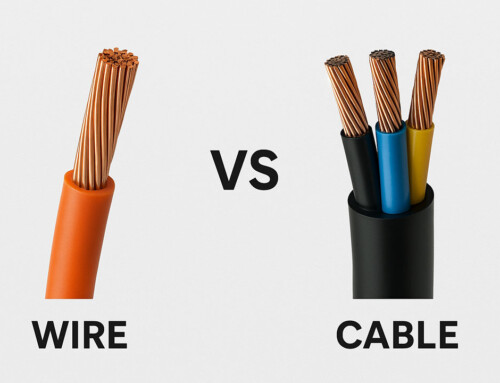Table of Contents
Electricity is an incredible asset that enhances our daily lives, yet it also poses significant risks. An electrical shock can occur in a split second, resulting in severe injuries or even fatalities. The danger is particularly pronounced in the vicinity of water, as water is a potent conductor of electricity and can easily create a path for current to pass through the human body. Thankfully, there exists a critical safety feature designed to mitigate these risks: the GFCI outlet, also referred to as a Ground Fault Circuit Interrupter. This unsung champion serves a crucial role in safeguarding individuals from electrical threats, particularly in areas that are susceptible to moisture. Let’s explore the function and significance of GFCI outlets in ensuring your safety.
What is a GFCI Outlet?
A Ground Fault Circuit Interrupter (GFCI) outlet is a special type of electrical outlet that is designed to protect people from the risk of electric shock. It does this by rapidly cutting off power if it detects a ground fault, which happens when electricity flows along an unintended path to the ground. This can occur if an electrical appliance comes into contact with water or if there’s a short circuit in the wiring.
Types of GFCI Outlets
- Receptacle-Type GFCI: These outlets are designed to be installed in walls as replacements for regular outlets. They are equipped with technology that allows them to continuously monitor the flow of electricity. If they detect an imbalance, they have the capability to automatically shut off the power to prevent any potential hazards.
- Circuit Breaker GFCI: These devices are mounted in the electrical panel and offer ground fault circuit interrupter (GFCI) protection to designated circuits in the household. They provide a wider range of protection compared to GFCI receptacles..
- Temporary or Portable GFCI: These portable GFCI outlets are designed for temporary applications where GFCI protection is necessary but a permanent installation is not possible. They are commonly used at outdoor events, construction sites, and in other temporary power situations.
How GFCI Outlets Differ from Regular Outlets
Standard electrical outlets simply act as a channel for electricity to flow through without actively monitoring for any potential dangers. In contrast, Ground Fault Circuit Interrupter (GFCI) outlets can constantly monitor the flow of electrical current. If these outlets detect any irregularities, such as current traveling along an unintended pathway, they are designed to swiftly cut off the power supply in under a second. This rapid response is crucial in preventing the risk of electric shock.
How Does a GFCI Outlet Work?
A GFCI (Ground Fault Circuit Interrupter) outlet operates by constantly monitoring the flow of electricity into and out of the device. It compares the amount of current going to an appliance with the current returning from it. If a difference is detected, even as small as 4 to 5 milliamperes, the GFCI outlet will automatically trip and cut off power. This variation in current, known as a ground fault, suggests that electricity is flowing out of the intended circuit, which could potentially pose a danger, such as electric shock or fire risk.
The utilization of GFCI outlets is essential for detecting ground faults, averting electrical shock, and minimizing the potential for electrical fires. These outlets are particularly vital in locations where water and electricity intersect, including bathrooms, kitchens, garages, and outdoor spaces.
Benefits of Using GFCI Outlets
- Prevents Electric Shock: The main advantage is safeguarding individuals from the risk of experiencing life-threatening electric shocks.
- Reduces Risk of Electrical Fires: GFCI outlets play a crucial role in safeguarding against electrical fires by promptly identifying ground faults, which can lead to short circuits.
- Enhances Safety in Moist Areas: Ideal for bathrooms, kitchens, and outdoor areas where water increases the risk of electrical hazards.
- Compliance with Electrical Codes: By installing Ground Fault Circuit Interrupter (GFCI) outlets in your home, you can ensure that your electrical system complies with contemporary safety standards, effectively protecting against electric shocks and minimizing the risk of electrical hazards.
Where to Use GFCI Outlets
GFCI outlets are recommended in any area where electrical circuits may come into contact with water. Key areas include:
- Bathrooms
- Kitchens (particularly near sinks)
- Garages
- Basements
- Laundry rooms
- Outdoor areas (such as patios and decks)
Testing & Maintenance of GFCI Outlets
Regular testing and maintenance of GFCI outlets is essential to ensure proper functionality. Here’s how to do it:
- Monthly Testing: Press the “test” button on the outlet. If the power cuts off, the GFCI is working. Press the “reset” button to restore power.
- Visual Inspection: Look for any signs of damage or wear and tear on the outlet.
- Professional Inspection: If a GFCI outlet fails a test or doesn’t reset properly, consult a qualified electrician.
Troubleshooting Tripped Ground Fault Circuit Interrupters
If your GFCI outlet keeps tripping, it could be due to a ground fault, moisture in the outlet, or a faulty appliance. Follow these steps:
- Unplug all devices from the outlet.
- Press the “reset” button on the GFCI outlet.
- If it trips again, there may be a wiring issue or a persistent ground fault. Contact a professional electrician to investigate.
GFCI outlets, or ground fault circuit interrupter outlets, play a crucial role in ensuring home electrical safety. They are designed to provide protection against electric shocks and to minimize the risk of electrical fires. These outlets are especially important in areas with high moisture levels, such as bathrooms, kitchens, and outdoor spaces.
It is important to regularly test and maintain GFCI outlets to verify that they are functioning properly. Remember, electrical work can be dangerous. If you have any doubts about how to proceed, always prioritize safety and seek assistance from a qualified electrician.
Frequently Asked Questions
1. Do I need GFCI outlets in my old house?
It’s important to note that GFCI outlets are highly recommended for all homes, especially in crucial areas such as bathrooms and kitchens, for enhanced household safety.
2. Can I plug a power strip into a GFCI outlet?
Using power strips with GFCI outlets is not recommended as they can bypass the GFCI protection for other devices plugged into them. If you require more outlets, it’s better to consider installing additional GFCI outlets to ensure proper protection against electrical hazards.
3. My GFCI outlet keeps tripping. What should I do?
There could be a ground fault (leakage of electricity). Unplug all devices and try resetting the outlet. If it trips again, consult a qualified electrician to identify the source of the fault.
4. How often should I test my GFCI outlets?
Make sure to test your GFCI outlets every month. To do this, press the test button and then the reset button. If the outlet doesn’t trip or reset correctly, it’s important to seek advice from a qualified electrician.
5. Can I replace a GFCI outlet myself?
It’s important to note that while individuals with electrical experience may feel confident in replacing a GFCI outlet, it is generally advised to seek the expertise of a qualified electrician to guarantee correct installation and overall safety.
6. Are GFCI outlets weatherproof?
GFCI outlets with the “WR” marking are specifically engineered to withstand various weather conditions, including snow, ice, moisture, and humidity. These outlets are constructed with corrosion-resistant materials, ensuring durability and safety in outdoor or harsh environments.






